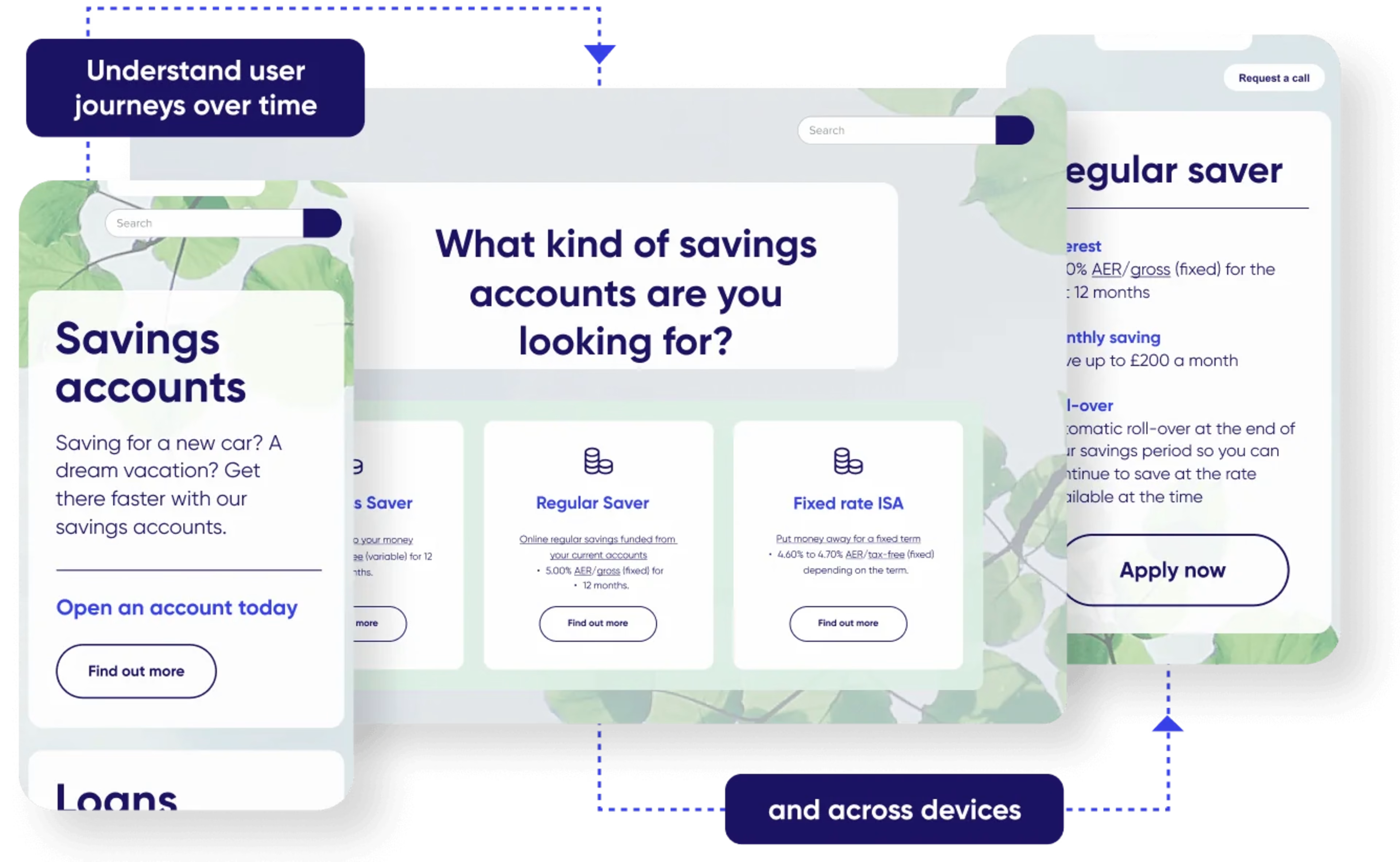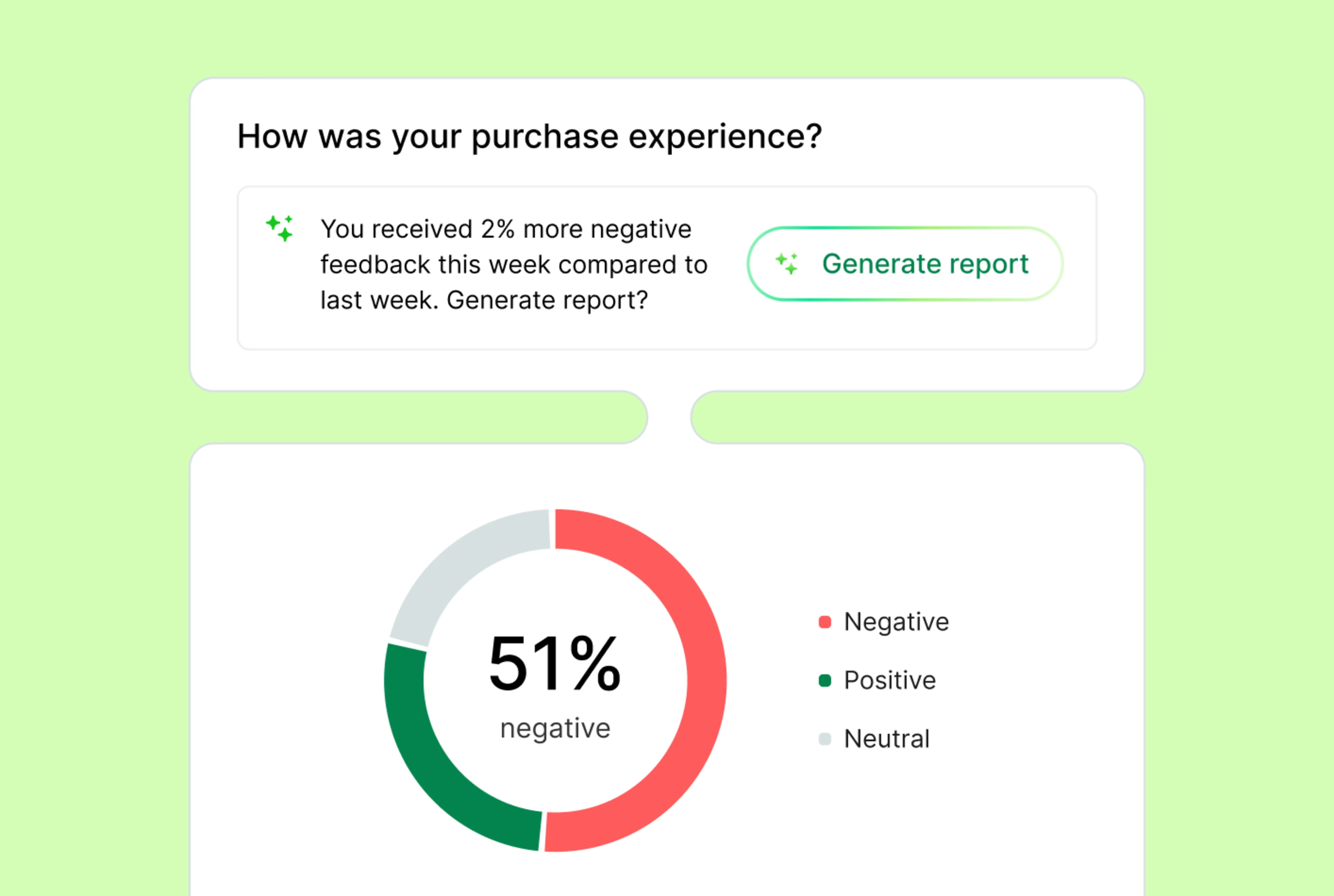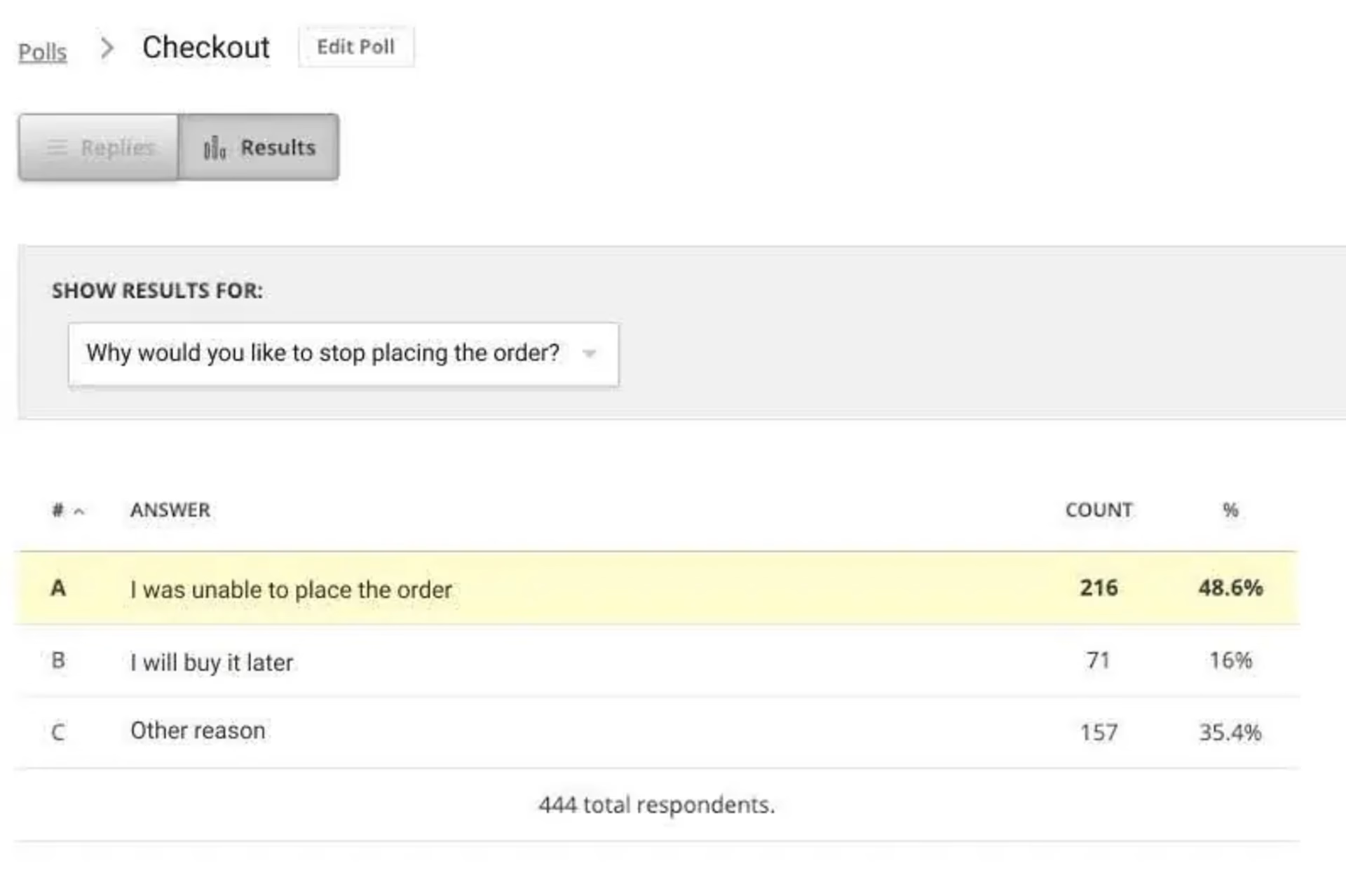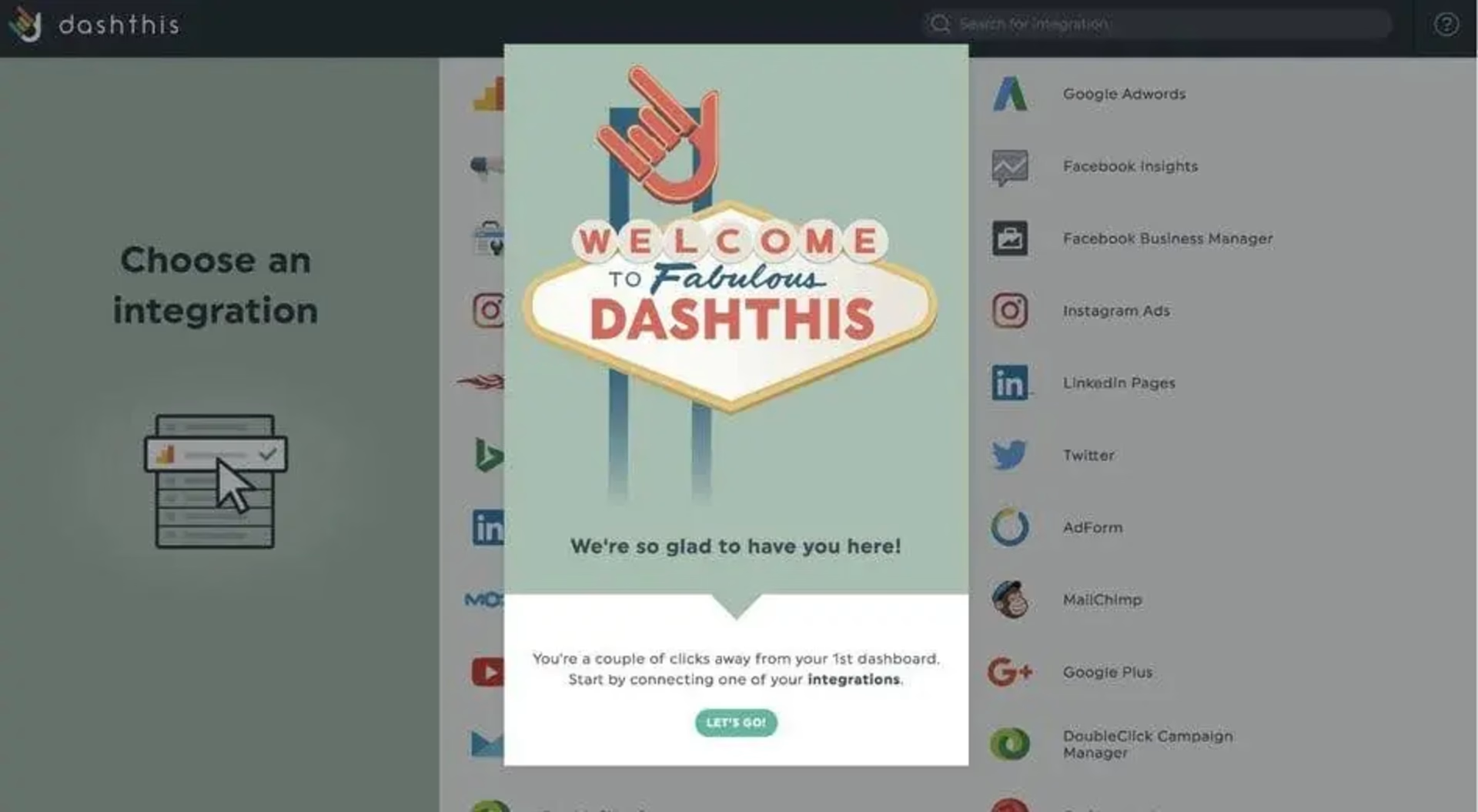The moment a lead converts is crucial—but it’s only the first step in building a first-class customer journey. To delight your customers throughout their experience—from purchase to post-purchase to retention—you need to use actionable and personalized customer satisfaction techniques.
But with shifting customer expectations and buying behavior, it can be hard to know exactly how to deliver a satisfying user and product experience (PX).
This article walks you through seven techniques that'll help you improve customer satisfaction by deeply understanding your customers’ needs, blockers, and motivations. We show you how these techniques benefit your business and users, how to implement them, and how different companies have designed successful customer satisfaction strategies.
Summary
Seven ways to improve customer satisfaction include:
Understanding the customer journey firsthand by using tools like Session Replay to see how customers use your product and site
Collect customer feedback by speaking to your customers and using Feedback tools to see how users feel at different stages of their journey
Offer proactive multi-channel support for customers. Some ways to do this include training support staff, using chatbots, and creating an extensive help center.
Act on customer feedback by sharing it with teams, responding to reviews, and reviewing feedback to prioritize which changes will have the greatest impact
Segment your audience and create personalized experiences for each segment
Track customer satisfaction with surveys that calculate Net Promoter Score® (NPS) and customer satisfaction score
Develop a strategy to follow up with your customers to increase customer retention and grow a base of loyal customers
7 techniques to improve customer satisfaction
Customer satisfaction (CSAT) strategies help you benchmark your progress, highlight areas of growth, and elevate your product and customer experience (CX). And to define these strategies, you need to listen to (and understand) your customers.
Remember: improving customer satisfaction isn’t a one-time job. Keeping your customers happy long-term relies on consistent efforts and regularly collecting and implementing user feedback—we’ll show you how.
Use these seven techniques to empathize with your customer needs, refine your customer journey, and increase your CSAT score:
1. Understand your customer journey—firsthand
Your users interact with several key customer touchpoints throughout their journey with your brand, from clicking on your website and reading a blog post to watching a product demo. Taken together, these touchpoints reveal crucial insights into the customer experience.
Customer journey mapping—where you map out the main stages of customer engagement with your company—gives you an overview of what this looks like.
But to get a fuller picture of the customer experience (and to understand where they get blocked and what they need) you need to go beyond mapping and see what customers really experience. And you can do that through tools like Contentsquare’s Product Analytics.

Contentsquare’s Product Analytics shows you end-to-end customer journeys
This reveals any points of user friction or frustration that negatively impact customer satisfaction—like areas where customers can’t find what they're looking for or have difficulty understanding or purchasing your product.
How to optimize your customer journey:
Map the customer journey to understand your customers, their journey, and key engagement areas
Experience the customer journey yourself. Explore your website anonymously and test key actions—like making a purchase, clicking a call to action (CTA), or browsing for information, so you know what it feels like to walk a mile in your user's shoes.
Watch session replays to see recordings of user sessions to supplement your understanding of the customer journey experience. For example, ecommerce teams watching user sessions on their website might notice their checkout process doesn’t convert visitors. This could alert them to users rage-clicking (when users repeatedly click an element out of frustration) which can be a quick fix to improve the customer experience.
Use these insights to improve your customer experience and remove any blockers or areas of frustration
🔥 Pro tip: watch Contentsquare’s (👋) Session Replays of users as they explore your digital product or website for key insights into the customer experience. See how users move, where they click, and what blocks them on their journey so you can make crucial user-backed decisions that improve customer satisfaction.
![[Visual] Session Replay](http://images.ctfassets.net/gwbpo1m641r7/ixsmocDmrb471y732GpId/a5d0b671a70df5f177bfe7262388623d/Screenshot_2024-11-04_at_19.22.27.png?w=3840&q=100&fit=fill&fm=avif)
Contentsquare’s Session Replays let you visualize how users navigate your website and digital product
2. Listen to your customers
There’s no way of knowing whether your customers are satisfied with your product or what they want you to update or fix, unless you ask them directly and actively listen to their response.
Listening and responding to your users helps you retain more customers and build product loyalty. But without the right tools in place to actively listen to your customers, you could be missing out on important roadblocks in the customer journey, key user frustrations, and unique ideas for improvement.
How to actively seek out customer input throughout the main touchpoints in their journey:
Interview your customers about their experience and what you can do to improve their satisfaction with your brand and product. Include surveys on your website, or send them one via a personalized post-purchase email. Hotjar by Contentsquare’s Engage tool lets you schedule and run customer interviews.
Run focus groups before launching a new feature, upgrade, or website design to gauge customer sentiment before they negatively impact user experience and sales alike
Place the Contentsquare Feedback widget on key conversion pages (like landing, product, and checkout pages) during the customer journey to gather user feedback in the wild. For example, software-as-a-service (SaaS) businesses use feedback widgets on popular product pages to improve PX by asking customers questions about their user experience.

Contentsquare’s Feedback widgets let you gather valuable user feedback throughout the onboarding process.
Show your customers you appreciate their feedback with loyalty points, reward programs, or a coupon for their participation
3. Offer proactive multi-channel customer support
Multi-channel support options help you quickly answer customer questions, ease user frustrations, pre-qualify leads, and better onboard your customers. If a customer can’t find a quick answer to their question on the channel they’re using, they're likely to jump ship and find another solution.
How to offer your customers multiple ways of communicating with you and keep them informed:
Use live chat or chatbots on your website to collect user feedback, respond to frequently asked questions (FAQs), and pre-qualify leads based on question types and depth
Provide pro tips or tooltips throughout the customer experience to help customers get the most value from your product, learn about new product features or upgrades, and drive product adoption
Use social listening tools like Hootsuite and interact with customers on their preferred social media channels. Answer questions in a live Q&A, reply directly to comments, and see what’s trending in relation to your product or brand.
Train customer service agents to provide a positive experience by actively listening to customer feedback, proactively providing solutions, maintaining transparency, and empathizing with customers.
Create a comprehensive help center on your website with user guides, video tutorials, or a knowledge base that offers product-related training, tips, and FAQs
4. Act on customer feedback
To achieve your customer satisfaction goals, you need to turn customer feedback into a concrete business strategy. Acting on customer feedback promotes positive customer experiences, builds customer loyalty and adds to their lifetime value.
How to effectively act on customer feedback:
Start by looking for trends in customer feedback and overall patterns in user behavior to determine which changes and decisions will most impact your customer's satisfaction, without sacrificing your brand integrity, product vision, or mission. For example, product teams might use feedback to prioritize product updates or add fixes to their product backlog.
Use social listening tools and popular review sites like G2 to respond to negative feedback, using it as an opportunity to build a stronger relationship with your customers. Be transparent about your efforts to fix their problems, and provide possible solutions.
Integrate Contentsquare with Slack to instantly share insights from Contentsquare’s Voice of Customer tools with your teams so you can work together to take action
Segment feedback into specific areas of focus like product, website, user onboarding, user experience (UX), etc.
How Turum-burum increased their average revenue per user (ARPU) by 11.46% using customer feedback
Digital design UX agency Turum-burum's goal was to increase shoe retailer Intertop’s conversion rates and customer satisfaction levels.
Using exit-intent surveys, they collected customer feedback based on the question, “Why would you like to stop placing the order?” They found that almost half of the respondents who abandoned checkout stopped due to a website malfunction.
By collecting and acting on customer feedback, Turum-burum quickly fixed the user checkout experience, minimizing crucial steps in Intertop’s checkout funnel.
By removing blockers and increasing customer satisfaction, their checkout bounce rate decreased by 13.35% and their average revenue per user (ARPU) grew by 11.46%.

Turum-burum used an exit-intent pop-up survey to collect Intertop feedback
5. Personalize your user experience
A personalized user experience shows your customers that you’re committed to meeting their specific needs and promotes product loyalty.
Since no two customer journeys are the same, it’s important to adapt your messaging to specific customers and their particular challenges, needs, and goals with tailor-made product suggestions, content, and support.
How to personalize your user experience:
Develop an ideal customer profile (ICP) based on your ideal customer's pain points, purchasing behaviors, critical characteristics, and demographics, including job title, income, or geographic location. Then, segment your customers into the group that fits them best.
Automate messaging to align with each customer and where they are in their journey. For example, a SaaS startup might use an automated email drip campaign that introduces new customers to useful content like product videos or user success stories.
Create a self-service experience to cater to a variety of customer needs and questions
Use artificial intelligence to monitor browsing and buying behavior and make product recommendations to customers. For example, after an unsuccessful online search, an ecommerce customer would be more likely to convert after receiving an email about related products from your store, which they didn’t find before.
Provide personalized content based on previous interactions and purchases. For example, after signing up for a free trial of their time-tracking tool, a SaaS company might send a new subscriber content related to ‘best time management practices’ to offer post-subscription value and drive customer engagement and, ultimately, satisfaction.
6. Leverage NPS and CSAT scores
Your Net Promoter Score (NPS) and customer satisfaction score are benchmarks that help you measure your customer satisfaction efforts and uncover areas for further improvement.
Continually monitoring your NPS and CSAT scores gives you access to data that helps you track customer satisfaction over a long period of time.
These scores also help you obtain qualitative insights about the user experience to find out what your customers like and dislike about your product experience, so you can improve the aspects of your customer experience that score poorly, and make sure your top-performing webpages or product features continue to do well.
How to leverage your NPS and CSAT scores:
Use Contentsquare’s NPS Surveys to ask users “How likely are you to recommend this product/company to a friend or colleague on a scale from 0 to 10?” Then, go deeper by asking them extra questions like “What’s the main reason for your score?” and “What could we do better?” to supplement your numerical score with actionable customer satisfaction insights.
![[Visual] Exit-intent survey](http://images.ctfassets.net/gwbpo1m641r7/70LxdbnLg3vHHjjMfZjfmb/ae68013aad3713169bfcac7b7ab1c795/image3.png?w=1920&q=100&fit=fill&fm=avif)
Contentsquare’s NPS Surveys supplement your numerical score with qualitative insights
💡Use CSAT Surveys to gather short-term satisfaction data during key moments of your customer journey. Ask users “How satisfied are you with our product or service?” and give them a rating scale of 1-5 or happy or sad. Then, ask customers why they gave you that score for a deeper understanding of their micro-experiences.
How DashThis increased customer satisfaction with their product by 140%
DashThis wanted to create a more intuitive onboarding process for marketers who use their automated marketing reports and dashboards.
After collecting user feedback, DashThis realized their first two steps in the user onboarding process (adding a data source and an integration) were harder to complete than other steps, resulting in a blank user dashboard.
Without full use of the tool, users were abandoning the onboarding process. User feedback showed users simply didn’t know where to click, and essential buttons weren’t bold enough to catch their attention.
To fix these problems, DashThis changed key button placement and colors, added a search bar, and incorporated videos, pop-ups, and various content to guide the user through their onboarding step-by-step. According to the NPS survey they sent out at the end of the free trial period, they increased customer satisfaction with their product by 140%.

DashThis step-by-step onboarding tooltips help guide users through product adoption and improve customer satisfaction
7. Follow up with your customers
Post-purchase follow-up with customers directly impacts customer retention by reminding users of your product’s value on their path to product adoption.
Think of creative, consistent ways to convey value in your follow-up to keep your product top of mind, and take the opportunity to ask customers for their honest opinions so you can learn what they need.
Before you follow up with your customers, set up a strong customer relationship management (CRM) tool to store key customer interactions and notes, so your team can reference them for more personalized outreach.
How to effectively follow up with your customers:
Send an email with frequently asked questions about product or site use, and include a video link with short steps your customers can follow to use and adopt the product
Use surveys to ask satisfied customers why they made a purchase, and then use that information to help you write better, customer-centered copy for email campaigns and landing pages. Creatively weaving customer input into your messaging increases the likelihood that customers will relate to your content and the need for your product.
Ask dissatisfied customers about their product and user experience, and how you could do better next time. If a dissatisfied customer has a one-off terrible experience, reaching out to them about their experience might encourage them to give your product another try.
Boost customer satisfaction with product experience insights
Having the right customer satisfaction strategies in place helps businesses measure their customer satisfaction efforts, continually improve their customer experience, and increase their number of loyal customers.
By keeping your focus on your customers and turning customer-centered insights into action, you can turbocharge the customer experience—and your customer satisfaction scores.
FAQs about customer satisfaction techniques
Net Promoter®, NPS®, NPS Prism®, and the NPS-related emoticons are registered trademarks of Bain & Company, Inc., NICE Systems, Inc., and Fred Reichheld. Net Promoter ScoreSM and Net Promoter SystemSM are service marks of Bain & Company, Inc., NICE Systems, Inc., and Fred Reichheld.

![[Visual] Contentsquare's Content Team](http://images.ctfassets.net/gwbpo1m641r7/3IVEUbRzFIoC9mf5EJ2qHY/f25ccd2131dfd63f5c63b5b92cc4ba20/Copy_of_Copy_of_BLOG-icp-8117438.jpeg?w=1920&q=100&fit=fill&fm=avif)